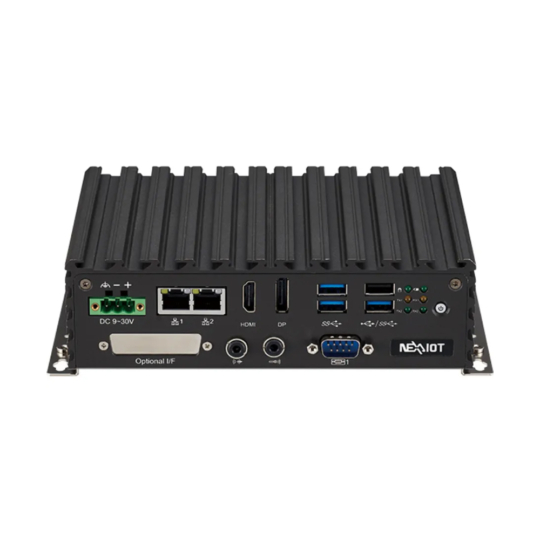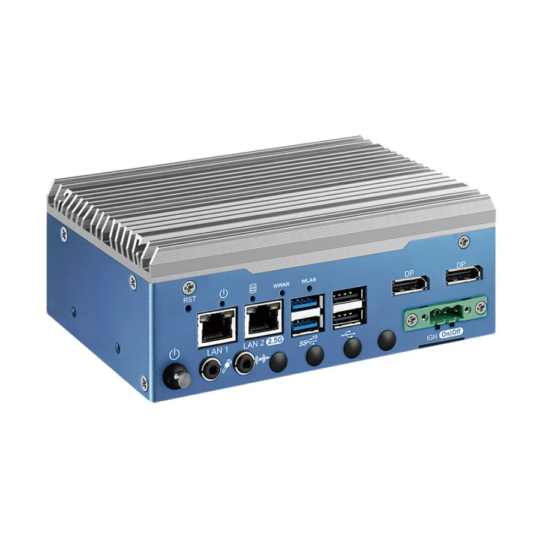Why You Need a Harsh Environment Computer for Industrial Applications
Industrial applications for edge computing are not just happening in pristine, temperature-controlled computer rooms. Environments for edge computing can be varied depending on the application and can go from being relatively benign to extremely harsh. Rugged Computers are designed for these tough environments. The benefits of a rugged computer for harsh environments include support for a wide ambient temperature range, fanless passive cooling to prevent dust or water ingress, shock & vibration resistance, and wide power input. By the end of this article, you’ll be fully equipped with the knowledge you’ll need to know if your application could benefit from a industrial harsh environment computer.
Overall, any industrial application that involves exposure to extreme temperatures, humidity, dust, vibration, or shock can benefit from the use of a harsh environment computer. There are several industrial applications that require the use of harsh environment computers. Here are some of the most popular applications which use our rugged computers built for tough environments and ensure the critical operations continue to run smoothly: Manufacturing and Factory Automation, Food and Beverage Processing, Autonomous and Unmanned Systems, Oil and Gas Exploration, Smart Agriculture, Military & Aerospace, and Transportation.
Harsh Environmental Factors Requiring Rugged Computing
Extreme Temperature Swings: Edge computers, which are meant to be incorporated into a larger system, can be exposed to extreme temperatures, both cold and hot, whether inside a cabinet or outdoors. The internal temperature of a chassis or cabinet can become much higher than the temperature in the surrounding environment due to heat produced by components such as CPUs and GPUs. It is important to take into account higher temperature thresholds when determining what temperatures are suitable for operation. Rugged computers are known for their ability to operate in a variety of temperature conditions, making them ideal for situations where temperature control is not an option. Ordinary industrial PCs usually perform optimally in temperatures between -10 and 60 degrees Celsius, whereas a harsh environment PC must endure a much wider range between -40 and 80 degrees Celsius. Identifying the temperature limits for your program should assist you in selecting the machine that will run efficiently in your demanding environment.
Dust, Dirt, Water Ingress: For many years, fanless embedded PCs have been available that use heatsinks of varying designs to keep the system cool while operating. To ensure higher performance, larger heatsinks with fins are needed in order to increase the surface area and disperse heat via passive convection cooling. Rugged computers are designed to function in harsh and dusty conditions, with a wide range of operating temperatures. These computers are fanless and ventless, meaning they do not allow dust and other particles to enter and cause damage. This feature of passive cooling allows the computer to function properly in difficult environments. A fanless cooling system makes it possible for a tough computer to work in the most difficult of conditions with ease.
Furthermore, for applications outdoor or food and processing, ingress protection ratings are increased to create a waterproof computer. The Ingress Protection (IP) rating is a standard that indicates the degree of protection a rugged computer has against water and dust. The first digit in the rating indicates the level of protection against solid objects, while the second digit indicates the level of protection against liquids.
Repeat Shock and Vibration: The use of computers in vehicles often necessitates them being able to withstand and operate in challenging conditions, such as extremes of vibration and shock, which is where rugged computers excel as they are often certified to meet the industry’s safety requirements. Having certifications like these can provide assurance that a rugged computer won’t be affected by the common shock and vibration that comes with a tough transportation environment. Furthermore, dampening brackets are available which provide additional shock and vibration isolation when mounting your rugged computer in a car, truck, aircraft, boat, or train.
Unstable Power Fluctuations: Rugged computers are built to withstand a variety of power sources, allowing them to be connected to a direct DC power source when an AC Adapter is not available. This typically requires a wide power input range. Rugged computers are designed to withstand power fluctuations, with the capacity to typically accept inputs from 9-48 VDC sources. In addition, rugged computers usually have the ability to sync with the ignition of your car. This provides the capability to power the computer on or off your within a specified time period, preventing any corruption of data.
Hazardous Gases: Intrinsic safety is a method of protecting electronic equipment, including computers, from igniting flammable or explosive materials in hazardous environments. Methods for manufacturing an intrinsically safe computer include designing with non-sparking materials, limiting power and energy, implementing intrinsically safe barriers, grounding, and shielding. ATEX and IECEx are certifications that indicate a intrinsically-safe computer is safe for use in explosive environments, such as those found in oil and gas operations. ATEX is the European standard, while IECEx is the international standard.
Looking for a Harsh Industrial PC?
Tell us about your application and a member of our team will get right back to you.


